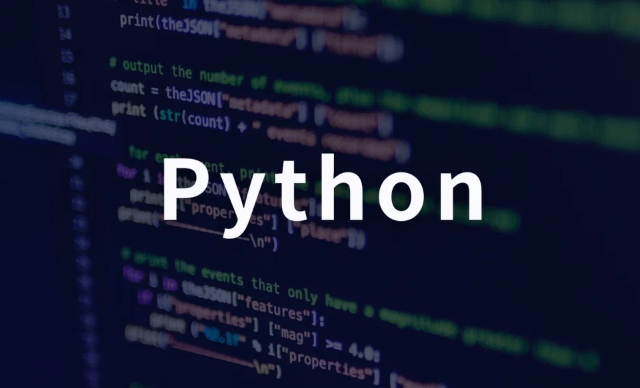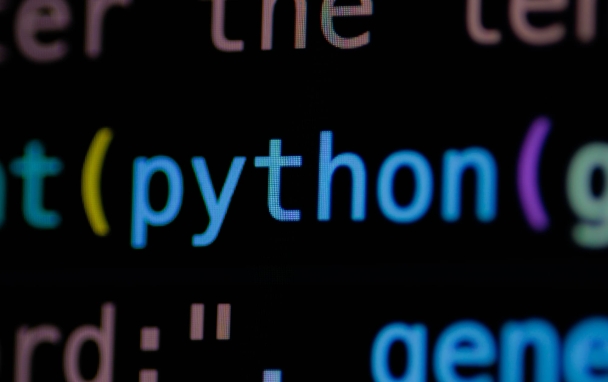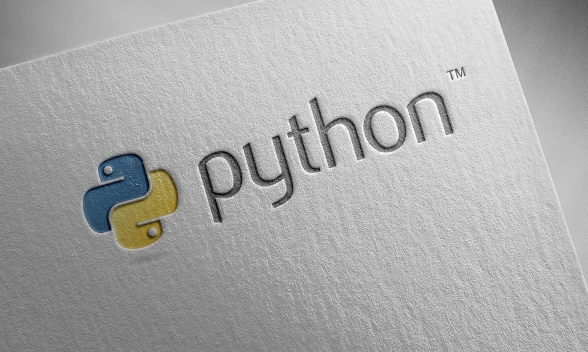 Backend Development
Backend Development
 Python Tutorial
Python Tutorial
 Basic Web Scraping Techniques Using Python Requests and BeautifulSoup
Basic Web Scraping Techniques Using Python Requests and BeautifulSoup
Basic Web Scraping Techniques Using Python Requests and BeautifulSoup
Jul 05, 2025 am 02:57 AMThe basic method of using Python for web crawling is to combine requests and BeautifulSoup, first send a request to get HTML, and then parse and extract data. 1. After installing the library, use requests.get() to get the web page content and handle exceptions; 2. BeautifulSoup parses HTML, locates elements through find_all(), class name, ID, etc. and extracts text or links; 3. Set headers to simulate browser access, and adds delays to avoid triggering anti-crawling mechanisms.

Directly answer the title question: Using Python for web crawling, the most basic and common method is to combine the two libraries: requests and BeautifulSoup. They are simple and practical to use together, and are suitable for data extraction of most static pages.

1. Installation and basic procedures
To start web crawling, you must first install the necessary libraries:

pip install requests beautifulsoup4
The whole process is roughly divided into three steps:
- Use
requeststo send requests to get web page content (HTML) - Parsing HTML with
BeautifulSoup - Extract the required data, such as title, paragraph or link
The most important thing in this step is to ensure that the page content can be obtained normally. Sometimes it will fail due to server restrictions or network problems, so it is recommended to add an exception, such as:

import requests
url = 'https://example.com'
try:
response = requests.get(url)
response.raise_for_status() # If the status code is not 200, an exception will be thrown except requests.RequestException as e:
print(f"Request failed: {e}")2. How to locate and extract data
After getting the HTML content, the next step is to parse the structure. You can use BeautifulSoup to find tags, class names, or IDs.
Common practices:
- Find all child nodes under a tag:
.find_all() - Filter elements by class name:
soup.find_all('div', class_='your-class') - Extract text content:
.get_text() - Get the link address:
.get('href')
For example, I want to extract all the titles and links in a news list page:
from bs4 import BeautifulSoup
soup = BeautifulSoup(response.text, 'html.parser')
for item in soup.find_all('h2', class_='post-title'):
title = item.get_text()
link = item.find('a')['href']
print(title, link)It should be noted here that the HTML structures of different websites vary greatly. It is best to manually check the web source code to confirm the structure, and do not blindly write the selector.
3. Avoid being blocked or triggering anti-crawling mechanism
Although this is just a basic crawling technique, the anti-crawler problem cannot be completely ignored. Many websites will respond to frequent requests, such as returning verification codes, blocking IP, etc.
A few simple but effective suggestions:
Add
headersto simulate browser access:headers = { 'User-Agent': 'Mozilla/5.0 (Windows NT 10.0; Win64; x64) AppleWebKit/537.36 (KHTML, like Gecko) Chrome/91.0.4472.124 Safari/537.36' } response = requests.get(url, headers=headers)Add random delays between requests to avoid continuous access too fast:
import time import random time.sleep(random.uniform(1, 3))
Don't send too many requests, especially during the testing phase, keeping single-threaded and slow-paced safer.
These measures cannot be 100% anti-climbing, but they are enough in the basic crawling scenario.
Basically that's it. Although the combination of Requests BeautifulSoup is simple, it is OK to deal with most static pages. There is no need for too complex logic, the key is to be familiar with the HTML structure and CSS selector writing.
The above is the detailed content of Basic Web Scraping Techniques Using Python Requests and BeautifulSoup. For more information, please follow other related articles on the PHP Chinese website!

Hot AI Tools

Undress AI Tool
Undress images for free

Undresser.AI Undress
AI-powered app for creating realistic nude photos

AI Clothes Remover
Online AI tool for removing clothes from photos.

Clothoff.io
AI clothes remover

Video Face Swap
Swap faces in any video effortlessly with our completely free AI face swap tool!

Hot Article

Hot Tools

Notepad++7.3.1
Easy-to-use and free code editor

SublimeText3 Chinese version
Chinese version, very easy to use

Zend Studio 13.0.1
Powerful PHP integrated development environment

Dreamweaver CS6
Visual web development tools

SublimeText3 Mac version
God-level code editing software (SublimeText3)
 How to handle API authentication in Python
Jul 13, 2025 am 02:22 AM
How to handle API authentication in Python
Jul 13, 2025 am 02:22 AM
The key to dealing with API authentication is to understand and use the authentication method correctly. 1. APIKey is the simplest authentication method, usually placed in the request header or URL parameters; 2. BasicAuth uses username and password for Base64 encoding transmission, which is suitable for internal systems; 3. OAuth2 needs to obtain the token first through client_id and client_secret, and then bring the BearerToken in the request header; 4. In order to deal with the token expiration, the token management class can be encapsulated and automatically refreshed the token; in short, selecting the appropriate method according to the document and safely storing the key information is the key.
 Explain Python assertions.
Jul 07, 2025 am 12:14 AM
Explain Python assertions.
Jul 07, 2025 am 12:14 AM
Assert is an assertion tool used in Python for debugging, and throws an AssertionError when the condition is not met. Its syntax is assert condition plus optional error information, which is suitable for internal logic verification such as parameter checking, status confirmation, etc., but cannot be used for security or user input checking, and should be used in conjunction with clear prompt information. It is only available for auxiliary debugging in the development stage rather than substituting exception handling.
 What are python iterators?
Jul 08, 2025 am 02:56 AM
What are python iterators?
Jul 08, 2025 am 02:56 AM
InPython,iteratorsareobjectsthatallowloopingthroughcollectionsbyimplementing__iter__()and__next__().1)Iteratorsworkviatheiteratorprotocol,using__iter__()toreturntheiteratorand__next__()toretrievethenextitemuntilStopIterationisraised.2)Aniterable(like
 What are Python type hints?
Jul 07, 2025 am 02:55 AM
What are Python type hints?
Jul 07, 2025 am 02:55 AM
TypehintsinPythonsolvetheproblemofambiguityandpotentialbugsindynamicallytypedcodebyallowingdeveloperstospecifyexpectedtypes.Theyenhancereadability,enableearlybugdetection,andimprovetoolingsupport.Typehintsareaddedusingacolon(:)forvariablesandparamete
 How to iterate over two lists at once Python
Jul 09, 2025 am 01:13 AM
How to iterate over two lists at once Python
Jul 09, 2025 am 01:13 AM
A common method to traverse two lists simultaneously in Python is to use the zip() function, which will pair multiple lists in order and be the shortest; if the list length is inconsistent, you can use itertools.zip_longest() to be the longest and fill in the missing values; combined with enumerate(), you can get the index at the same time. 1.zip() is concise and practical, suitable for paired data iteration; 2.zip_longest() can fill in the default value when dealing with inconsistent lengths; 3.enumerate(zip()) can obtain indexes during traversal, meeting the needs of a variety of complex scenarios.
 Python FastAPI tutorial
Jul 12, 2025 am 02:42 AM
Python FastAPI tutorial
Jul 12, 2025 am 02:42 AM
To create modern and efficient APIs using Python, FastAPI is recommended; it is based on standard Python type prompts and can automatically generate documents, with excellent performance. After installing FastAPI and ASGI server uvicorn, you can write interface code. By defining routes, writing processing functions, and returning data, APIs can be quickly built. FastAPI supports a variety of HTTP methods and provides automatically generated SwaggerUI and ReDoc documentation systems. URL parameters can be captured through path definition, while query parameters can be implemented by setting default values ??for function parameters. The rational use of Pydantic models can help improve development efficiency and accuracy.
 How to test an API with Python
Jul 12, 2025 am 02:47 AM
How to test an API with Python
Jul 12, 2025 am 02:47 AM
To test the API, you need to use Python's Requests library. The steps are to install the library, send requests, verify responses, set timeouts and retry. First, install the library through pipinstallrequests; then use requests.get() or requests.post() and other methods to send GET or POST requests; then check response.status_code and response.json() to ensure that the return result is in compliance with expectations; finally, add timeout parameters to set the timeout time, and combine the retrying library to achieve automatic retry to enhance stability.
 Setting Up and Using Python Virtual Environments
Jul 06, 2025 am 02:56 AM
Setting Up and Using Python Virtual Environments
Jul 06, 2025 am 02:56 AM
A virtual environment can isolate the dependencies of different projects. Created using Python's own venv module, the command is python-mvenvenv; activation method: Windows uses env\Scripts\activate, macOS/Linux uses sourceenv/bin/activate; installation package uses pipinstall, use pipfreeze>requirements.txt to generate requirements files, and use pipinstall-rrequirements.txt to restore the environment; precautions include not submitting to Git, reactivate each time the new terminal is opened, and automatic identification and switching can be used by IDE.





